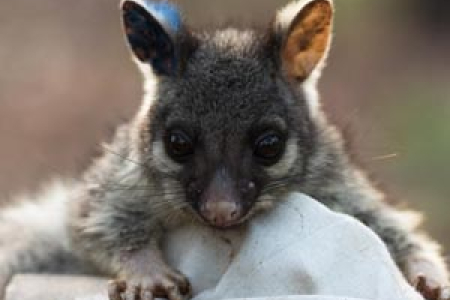Researchers fence out cats in Kakadu
In an intensive effort to better understand the role of feral cats in native mammal decline, two cat-exclosure fences have been built in Kakadu National Park.
Staff from the Northern Territory Government, Parks Australia and Charles Darwin University today joined traditional owners, students and volunteers to drive larger animals out of the second site, closing the gate on the fence and formally marking the beginning of the experiment.
Northern Territory Government scientist Graeme Gillespie said it was a historic moment in the battle to protect Australia’s native species, many of which are in the midst of an extinction crisis.
“A 2012 government assessment lists 17 mammal species extinct in the wild in the Northern Territory and a further 100 animal species as threatened,” Dr Gillespie said.
“While a combination of factors is almost always at play, we believe feral cats to be the biggest threat currently.
“Cat fences are not designed to be long-term conservation solutions, but what we are hoping to find out is whether native mammal populations bounce back in the absence of predators.
“We know that feral cats are highly effective hunters that eat a very wide range of prey including insects, reptiles, birds and mammals. Stomach content analysis has revealed a feral cat can eat up to 30 animals in one night.”
The two fenced sites in the World Heritage-listed park are each larger than 50 football fields (64 hectares) and are equipped with an array of motion sensor cameras to monitor the perimeter and native animals inside the exclosure.
A floppy top prevents cats from entering the exclosures but the fence mesh is large enough to allow small natives to move in and out. Data collected from the fenced sites will be compared with four other unfenced control sites in the area.
“Given its significance as a nationally protected area, park staff and traditional owners clearly have a role to play in helping to identify the key factors in mammal decline. We could not have undertaken this research without their support,” Dr Gillespie said.
“Feral cats are the same species as domestic cats and are now fully established in every environment across mainland Australia and many offshore islands.
“Urgent action is required to better understand how to manage feral cats before more wildlife species are lost forever. Lowering the cat population enough to take pressure off natives will be difficult and expensive, so we also need to trial cat control techniques.”
This research is funded by the Australian Government’s National Environmental Research Program.
